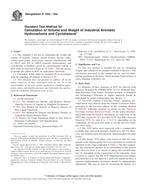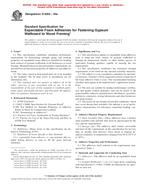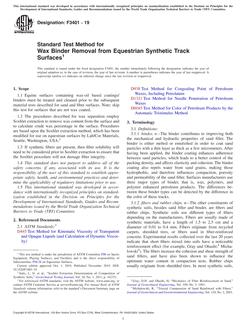1.1 This guide covers the deactivation of fluid catalytic cracking (FCC) catalyst in the laboratory as a precursor to small scale performance testing. FCC catalysts are deactivated in the laboratory in order to simulate the aging that occurs during continuous use in a commercial fluid catalytic cracking unit (FCCU). Deactivation for purposes of this guide constitutes hydrothermal deactivation of the catalyst and metal poisoning by nickel and vanadium. Hydrothermal treatment is used to simulate the physical changes that occur in the FCC catalyst through repeated regeneration cycles. Hydrothermal treatment (steaming) destabilizes the faujasite (zeolite Y), resulting in reduced crystallinity and surface area. Further decomposition of the crystalline structure occurs in the presence of vanadium, and to a lesser extent in the presence of nickel. Vanadium is believed to form vanadic acid in a hydrothermal environment resulting in destruction of the zeolitic portion of the catalyst. Nickel's principle effect is to poison the selectivity of the FCC catalyst. Hydrogen and coke production is increased in the presence of nickel, due to the dehydrogenation activity of the metal. Vanadium also exhibits significant dehydrogenation activity, the degree of which can be influenced by the oxidation and reduction conditions prevailing throughout the deactivation process. The simulation of the metal effects that one would see commercially is part of the objective of deactivating catalysts in the laboratory.
1.2 The two basic approaches to laboratory-scale simulation of commercial equilibrium catalysts described in this guide are as follows:
1.2.1 Cyclic Propylene Steaming (CPS) Method, in which the catalyst is impregnated with the desired metals via an incipient wetness procedure (Mitchell method) followed by a prescribed steam deactivation.
1.2.2 Crack-on Methods, in which fresh catalyst is subjected to a repetitive sequence of cracking (using a feed with enhanced metals concentrations), stripping, and regeneration in the presence of steam. Two specific procedures are presented here, a procedure with alternating metal deposition and deactivation steps and a modified Two-Step procedure, which includes a cyclic deactivation process to target lower vanadium dehydrogenation activity.
1.3 The values stated in either SI units or inch-pound units are to be regarded separately as standard. The values stated in each system may not be exact equivalents; therefore, each system shall be used independently of the other. Combining values from the two systems may result in non-conformance with the standard.
1.4 This standard does not purport to address all of the safety concerns, if any, associated with its use. It is the responsibility of the user of this standard to establish appropriate safety and health practices and determine the applicability of regulatory limitations prior to use.
Product Details
- Published:
- 04/01/2012
- Number of Pages:
- 5
- File Size:
- 1 file , 84 KB
- Redline File Size:
- 2 files , 160 KB


